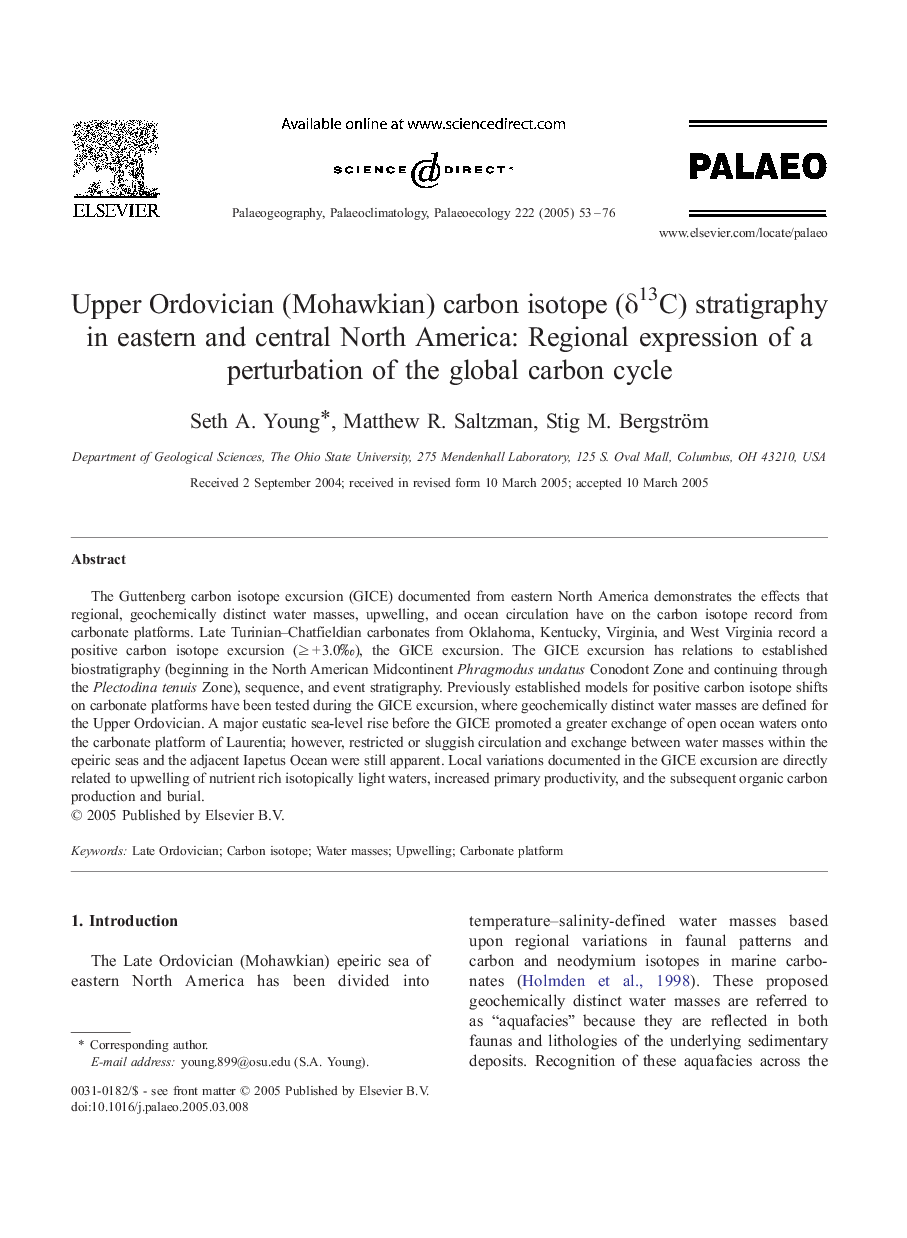| Article ID | Journal | Published Year | Pages | File Type |
|---|---|---|---|---|
| 9463146 | Palaeogeography, Palaeoclimatology, Palaeoecology | 2005 | 24 Pages |
Abstract
The Guttenberg carbon isotope excursion (GICE) documented from eastern North America demonstrates the effects that regional, geochemically distinct water masses, upwelling, and ocean circulation have on the carbon isotope record from carbonate platforms. Late Turinian-Chatfieldian carbonates from Oklahoma, Kentucky, Virginia, and West Virginia record a positive carbon isotope excursion (â¥Â + 3.0â°), the GICE excursion. The GICE excursion has relations to established biostratigraphy (beginning in the North American Midcontinent Phragmodus undatus Conodont Zone and continuing through the Plectodina tenuis Zone), sequence, and event stratigraphy. Previously established models for positive carbon isotope shifts on carbonate platforms have been tested during the GICE excursion, where geochemically distinct water masses are defined for the Upper Ordovician. A major eustatic sea-level rise before the GICE promoted a greater exchange of open ocean waters onto the carbonate platform of Laurentia; however, restricted or sluggish circulation and exchange between water masses within the epeiric seas and the adjacent Iapetus Ocean were still apparent. Local variations documented in the GICE excursion are directly related to upwelling of nutrient rich isotopically light waters, increased primary productivity, and the subsequent organic carbon production and burial.
Related Topics
Physical Sciences and Engineering
Earth and Planetary Sciences
Earth-Surface Processes
Authors
Seth A. Young, Matthew R. Saltzman, Stig M. Bergström,
